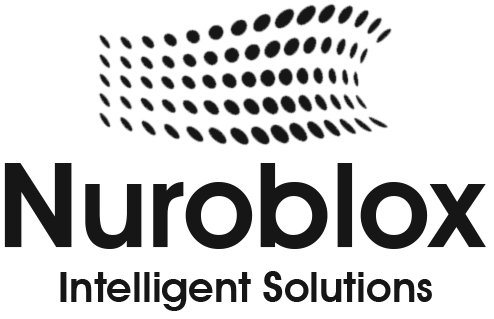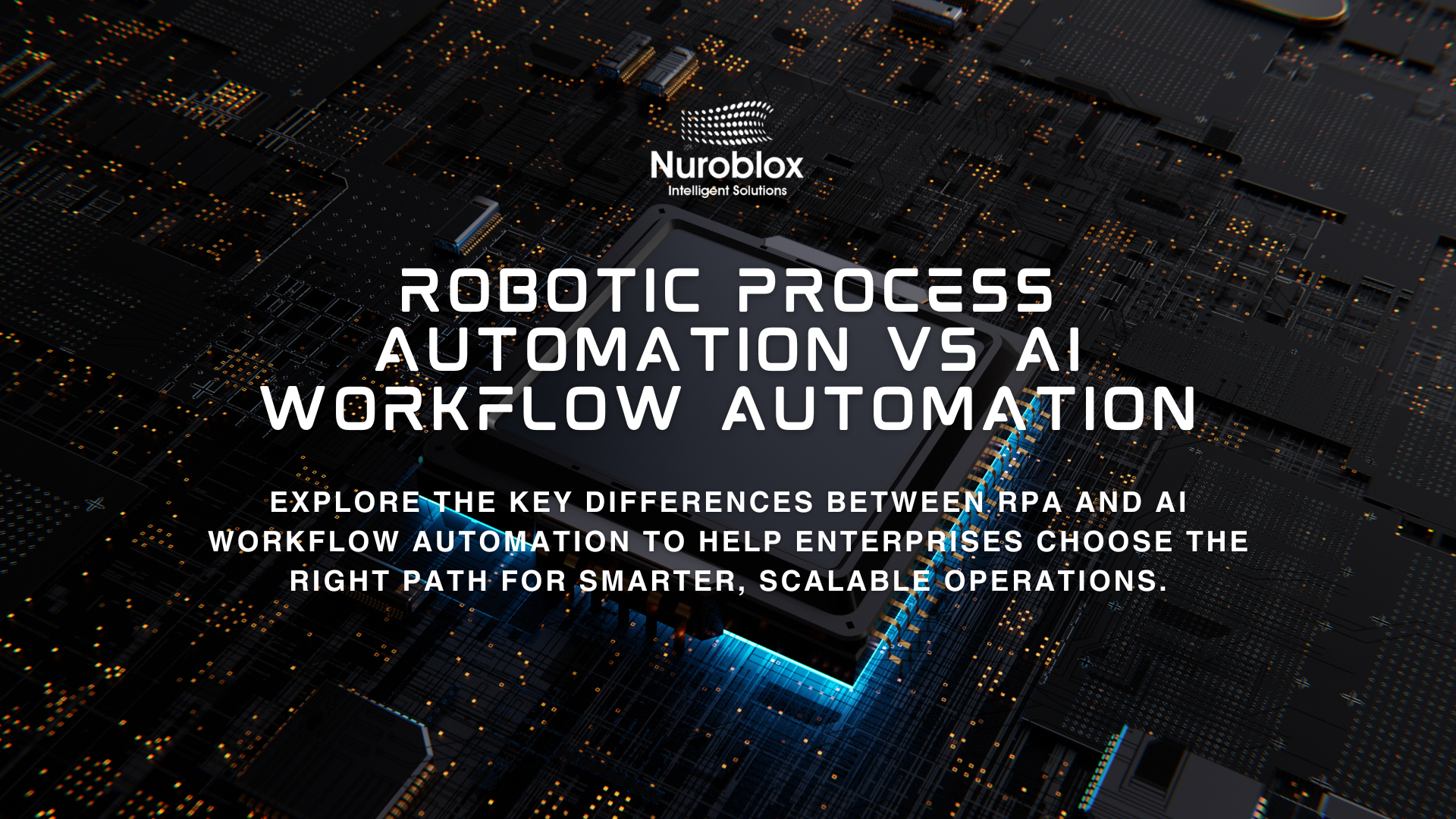Robotic Process Automation vs AI Workflow Automation: Choosing the Right Path for the Enterprise
In the last decade, automation has become a strategic imperative for enterprises seeking efficiency, agility, and resilience. Among the most discussed approaches are Robotic Process Automation (RPA) and AI Workflow Automation (AIWA). While enterprises initially turned to RPA for cost savings and efficiency in rule-based processes, the rise of artificial intelligence-driven automation has redefined what business workflows can achieve.
Yet, many executives remain uncertain about the true differences between robotic process automation vs AI workflow automation. The oversaturation of buzzwords creates ambiguity over which solution to scale. In this guide, we’ll clarify distinctions, identify enterprise use cases, compare strengths and weaknesses, and build a roadmap for effective adoption.
The choice is not always “either-or” it’s about deciding where RPA fits versus when AI-powered workflow automation is necessary for scale.
Understanding Robotic Process Automation (RPA)
Robotic Process Automation is designed to automate repetitive, rules-based tasks by mimicking human interactions with systems.
Key Features of RPA
- Rule-driven execution (if-then logic)
- Mimics click-and-type interactions on user interfaces
- Best suited for structured, repeatable tasks
- Works with legacy systems without APIs
Typical Enterprise RPA Use Cases
- Invoice processing in finance and accounts payable
- Copy-paste operations between CRM and ERP systems
- Data entry and extraction from structured forms
- Employee onboarding processes with fixed templates
RPA’s primary strength lies in speed, compliance, and accuracy for high-volume, repetitive tasks. However, it struggles when faced with variability, unstructured data, or adaptive decisions.
Understanding AI Workflow Automation (AIWA)
AI Workflow Automation takes automation beyond mimicry. It embeds machine learning (ML), natural language processing (NLP), computer vision, and decision intelligence into end-to-end workflows.
Key Features of AI Workflow Automation
- Handles structured and unstructured data
- Learns from experience and improves continuously
- Uses predictive and prescriptive analytics to make decisions
- Integrates across modern cloud systems and APIs
- Supports orchestration of complex multi-step processes
Typical Enterprise AIWA Use Cases
- Customer Service- Intelligent chatbots + ticket routing based on intent detection
- Healthcare- Automating claims with AI-driven anomaly detection
- Insurance- Automated underwriting combining NLP (policy docs) and ML (risk models)
- Supply Chain- Predictive order fulfillment with dynamic re-routing recommendations
AI-driven workflows don’t just execute rules; they augment human cognition, adapt to new circumstances, and optimize processes in real time.
RPA vs AI Workflow Automation – The Core Differences
Enterprises often conflate RPA and AI workflow automation. The following table illustrates their fundamental differences:
| Dimension | Robotic Process Automation (RPA) | AI Workflow Automation (AIWA) |
| Scope | Task-level automation | End-to-end workflow automation |
| Data Handling | Structured data only | Structured + unstructured (text, voice, images) |
| Learning Capability | None (static rules) | Continuous learning and adaptation |
| Complexity Handling | Simple, repetitive tasks | Complex, dynamic, multi-step decision-making |
| Scalability | Fragile, requires scripting per change | Adaptive, scales across departments |
| Integration | Works around legacy systems via UI mimicry | Natively integrates APIs, cloud apps, enterprise data |
| Examples | Invoice entry, claims submissions | Intelligent claims adjudication, end-to-end HR hiring |
When to Use RPA vs AI Workflow Automation
Ideal Use Cases for RPA
- Short-term efficiency wins for back-office tasks
- Scenarios requiring compliance and audit trails
- Situations where legacy systems cannot be replaced
Ideal Use Cases for AI Workflow Automation
- Customer-facing operations requiring contextual intelligence
- Strategic processes driving revenue, agility, or growth
- Cross-functional workflows with multiple data types and sources
Hybrid Adoption
Successful enterprises often combine both-
- RPA at the task level (e.g., data extraction from invoices).
- AIWA at the workflow level (e.g., full accounts payable cycle including fraud detection, vendor risk scoring, and automatic approvals).
Enterprise Benefits of Each Approach
Benefits of RPA
- Quick deployment and ROI (~6–12 months)
- Minimizes human error in repetitive tasks
- Boosts compliance and audit trail integrity
Benefits of AI Workflow Automation
- Greater adaptability to real-world complexity
- Handles unstructured data (emails, contracts, images)
- Unlocks strategic insights via predictive decision-making
- Creates resilient, intelligent digital operations
Challenges and Limitations
RPA Limitations
- Brittle bots break when user interfaces change
- Limited long-term scalability
- Low adaptability without AI augmentation
AI Workflow Automation Limitations
- Higher initial investment
- Requires strong data governance and AI talent
- Complexity in integration with legacy systems

The evolution will not be RPA vs AIWA, but rather RPA + AIWA in symbiosis.
Predicted Trends
- Hyperautomation- Fusion of RPA, AI, process mining, and orchestration tools.
- Cognitive Automation- Embedding reasoning and language understanding in enterprise workflows.
- AI-first Workflows- By 2030, workflows will largely be designed around AI decision-makers augmented by lightweight RPA where legacy integration is needed.
- Autonomous Enterprises- Future AI-driven workflows will self-heal, self-optimize, and self-reimagine with minimal human intervention.
Strategic Roadmap for CIOs and CTOs
Step 1: Assess Automation Maturity
Audit existing RPA deployments for ROI, fragility, and value gaps.
Step 2: Identify Enterprise-Wide Workflows
Pinpoint cross-functional workflows that suffer from bottlenecks, delays, or redundancy.
Step 3: Build Hybrid Architecture
Combine RPA bots for UI tasks with AIWA platforms for orchestration and intelligence.
Step 4: Governance and Compliance
Embed AI risk management and governance frameworks (aligned with EU AI Act, NIST AI Risk Management Framework).
Step 5: Scale Across Value Chains
Expand automation horizontally across departments and vertically into more strategic processes.
Conclusion: Choosing the Right Balance
The debate between robotic process automation vs AI workflow automation is not about superiority,
but about strategic fit and scalability.
- RPA provides short-term efficiency in structured, repetitive areas.
- AI workflow automation drives long-term agility, intelligence, and resilience across dynamic enterprise workflows.
Forward-thinking organizations will blend both layers into intelligent hyperautomation ecosystems,
achieving speed, compliance, agility, and transformation at the same time.


